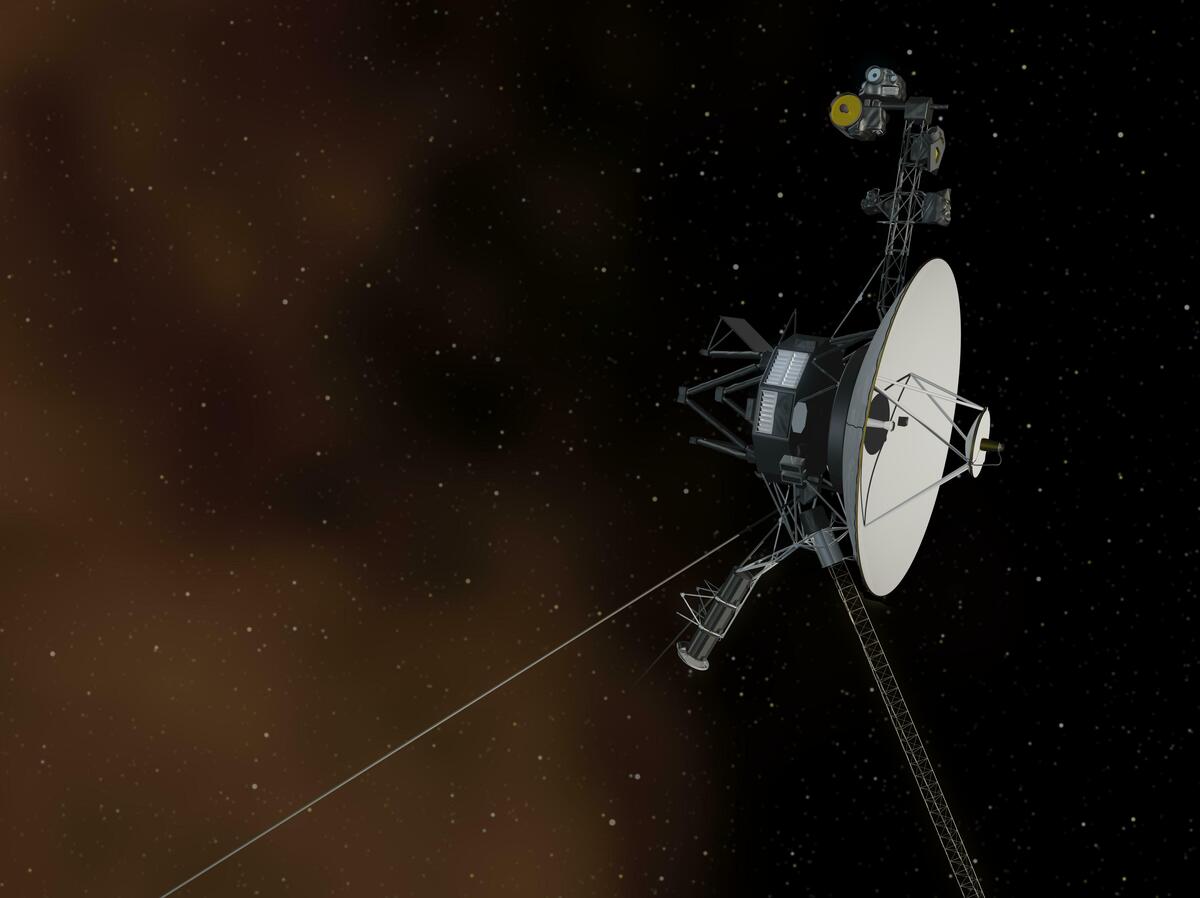This artist’s concept shows the Voyager 1 spacecraft entering the space between stars. Interstellar space is dominated by plasma, ionized gas (illustrated here as brownish haze).
NASA/JPL-Caltech
hide caption
toggle caption
NASA/JPL-Caltech

This artist’s concept shows the Voyager 1 spacecraft entering the space between stars. Interstellar space is dominated by plasma, ionized gas (illustrated here as brownish haze).
NASA/JPL-Caltech
The Voyager 1 space probe is the farthest human-made object in space. It launched in 1977 with a golden record on board that carried assorted sounds of our home planet: greetings in many different languages, dogs barking, and the sound of two people kissing, to name but a few examples. The idea with this record was that someday, Voyager 1 might be our emissary to alien life – an audible time capsule of Earth’s beings. Since its launch, it also managed to complete missions to Jupiter and Saturn. In 2012, it crossed into interstellar space.
But a few months ago, the probe encountered a problem. “It’s an elderly spacecraft,” says NPR science correspondent Nell Greenfieldboyce, “and it had some kind of electronic stroke.” Greenfieldboyce talks to Short Wave Host Regina G. Barber about the precarious status of Voyager 1 – the glitch threatening its mission, and the increasingly risky measures NASA is taking to try and restore it.
What interstellar adventure should we cover next? Email the show at shortwave@npr.org.
Listen to Short Wave on Spotify, Apple Podcasts and Google Podcasts.
Listen to every episode of Short Wave sponsor-free and support our work at NPR by signing up for Short Wave+ at plus.npr.org/shortwave.
This episode was produced by Margaret Cirino and edited by Geoff Brumfiel. Gilly Moon was the audio engineer.